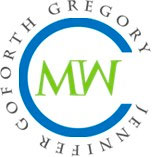Guest Post: Elizabeth Hanes explains how to write a winning content proposal
Note from Jennifer: I hope you loved the guest post by Elizabeth Hanes RN yesterday on landing high-paying clients with proposals. Today, she expands on that advice and explains how to write a winning proposal, with a sample proposal anyone can use as a guide for creating a winning proposal of their own. I encourage everyone to read this post carefully, because Elizabeth has included several tidbits of crucial advice that you may miss if you skim it, and that could cost you a lot of money.
 By Elizabeth Hanes RN
By Elizabeth Hanes RN
We’ve talked about why you should be thinking about using proposals to land more high-dollar gigs, and we’ve discussed why you need to establish a sales funnel before implementing proposals. Now let’s get to the nitty-gritty: How to write a winning proposal.
Everything I know about using proposals to land lucrative gigs has been gleaned from reading Million Dollar Consulting by Alan Weiss. I highly recommend you read it, too. The book was written for professional business consultants, but freelance writers can take away a lot of useful information from it.
I particularly want to note that some of the specific language used in the “Joint Accountabilities” section of the sample proposal is excerpted directly from the book. You should rephrase this section to meet your own needs.
How to Write a Winning Content Proposal
I’m not going to rehash everything in the sample proposal because that would be a waste of time when you can see for yourself how to structure the thing. Rather, I want to delve into how to best write the most important section of the proposal: Methodology and Options. In this crucial section you lay out the details of how you intend to solve the client’s problem.
However… do not give away the farm here! This section should be over-arching in nature. For example:
NO: I will write three blog posts per month. The post topics for March will be X, Y, and Z. I will interview experts from A, B, and C Institutes of All Knowledge to boost the credibility of each post. I will also use the following keywords: love, hope, peace. I’ve attached a separate document that outlines the details for every blog post for the rest of the year.
YES: I will write three blog posts per month that range in length from 500 to 800 words. The post topics will be mutually agreed upon by [contact name] and I, and the topics will be chosen for their ability to [insert desired goal: drive organic search rank, position the company as a thought leader, etc.]. The posts will include specified keywords.
You should never give a prospective client enough details to take your proposal and fully execute it themselves.
Leverage Your Negotiating Power by Offering Multiple Options
Now to the Options portion. You should always give prospective clients at least three options to choose from. By giving them multiple ways to work with you, you increase the chances of getting a “yes.”
That said, you should never make the options “more of the same.” Each option should include discrete variables because people often like to pay less, but they rarely want to give up value in exchange for saving money. Remember that your value in the contract is the money, and the client’s value lies in the deliverables. So structure your offerings in a way that any reduction in your value correlates with a reduction in their value. Here’s what I mean:
Scenario 1 NO:
Option 1: Three blog posts per month = $900/mo
Option 2: Six blog posts per month = $1,500 (you generously offered a discount for volume)
Option 3: Nine blog posts per month = $2,400 (volume discount)
Scenario 2 YES:
Option 1: Three blog posts per month = $900/mo
Option 2: Includes Option 1, plus Twitter and Facebook teaser copy for each post = $1,100
Option 3: Includes Option 2, plus one case study per quarter = $2,200
Under Scenario 1, you run the risk of the client countering with an offer to pay you $1,200 for Option 2, leaving you with no negotiating leverage because what client value can you reduce to offset the reduction in value to you? In other words, the client is asking you to give up some of your value (dollars) in the deal, while the client retains all of theirs (blog posts). This is a very poor negotiating position for you to be in.
Under Scenario 2, if the client counters with an offer to pay you $1,000 for Option 2, then you are able to counteroffer by reducing value on their side: “I can do $1,000 and produce only Twitter teasers.” Here, you are requiring the client to give up value (Facebook teaser copy) in exchange for you also giving up value (dollars).
Note: Always offer the price at the bottom of the proposal, not adjacent to the actual options (the way I’ve shown it above, for brevity). By separating the dollar sign from the option number, you subtly encourage the client to choose the most appealing option before knowing the price.
So… where are the high dollars you were talking about?
Maybe by now you’re thinking, “Okay, but I could land a $900 monthly contract without going through all this rigmarole!” And you would be right. I’ve deliberately used small dollars in the examples because concocting hypothetical scenarios that would command $3,000 or more per month would have been too wordy for this already lengthy blog post.
But don’t think that means that $3,000/month gigs aren’t out there. They are. And when you use a proposal to sell one, you’re more likely to land one. After all, putting yourself in the shoes of a prospective client, who would you rather contract with: The unknown-to-you freelance writer who sends a two-sentence reply to an email that says, “Sure, I can write a monthly white paper for you. I’d charge $5,000,” or the one who takes the time to find out your specific needs and then crafts a professional proposal that not only gives you a rate for those white papers but also offers you an option for producing those case studies you mentioned in passing?
The most lucrative proposal I have written so far was for $3,500/month to produce a quartet of newsletters. And I’ve had good luck closing contracts via proposal in the $2,000 to $3,000 per month range. Right now I have two clients on monthly project-based retainer for a total of $4,500. I landed both by proposal.
A professional content proposal can be a powerful tool for your success. I hope you take the template and run with it to high-dollar freelancing land!
Are you planning to use Elizabeth’s sample content proposal to chase some high-paying clients? Do you have any questions about this approach? Leave a comment and let me know!


I’m updating the post to add that I inked a proposal last week to produce blog content at a rate of $3,900/month. This was “Option 2” on my proposal.
In case anyone was wondering if proposals really can lead to higher-paying gigs. 🙂
Thank you for sharing this information, Elizabeth. It was a timely post as a new prospect just contacted me and I’m due to send off a proposal today; your message was just what I needed to read, especially in regards to how to offer options that don’t work against me. I’ve offered a discount in the past–similar to the one in your example–and, have found those don’t work in my favor. I appreciate the example of how to provide options that actually work for everyone!
You’re welcome, Liz! And keep us posted as to whether the proposal works to land this client.
Beth
Sending it off today! One more question–in the proposal you mention the measures of success for the project. This is a great addition, in fact this client asked me specifically about ROI. So I’m curious of your methods for providing data about ROI. I noticed in this example you mentioned new blog subscribers and social shares. Do you get the blog subscriber info from the client and monitor social on your own? Thanks for any insight! The area of metrics is one that can be hard to quantify (in my experience) as a content writer who is not working within the organization.
Thank you ever so for you post.Much thanks again.